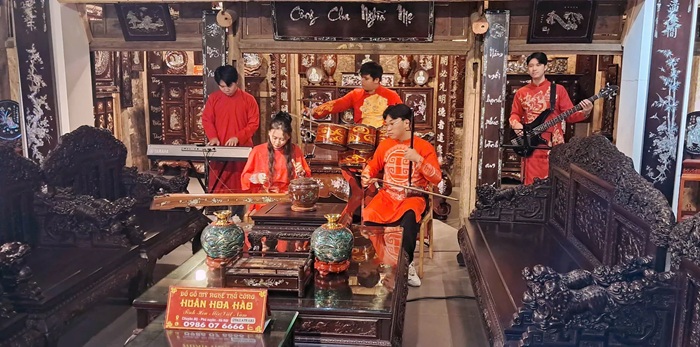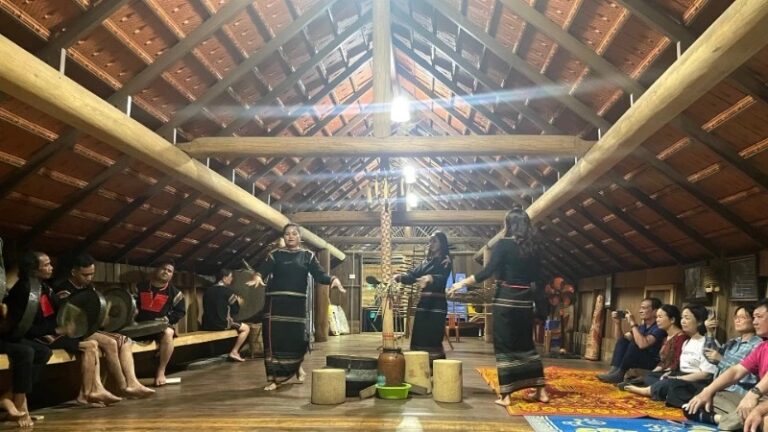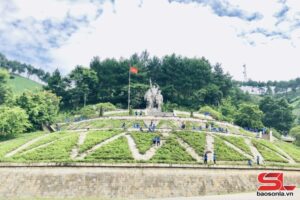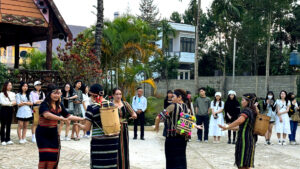Every year, when the spring comes, the San Chay ethnic community in Phu Luong District, Thai Nguyen Province, joyfully celebrates their traditional new crop festival with the lively sounds and rhythms of the Tac Xing folk dance. This dance carries profound meaning and is considered to be a bridge connecting heaven and earth, the past and present, and generations before and now.
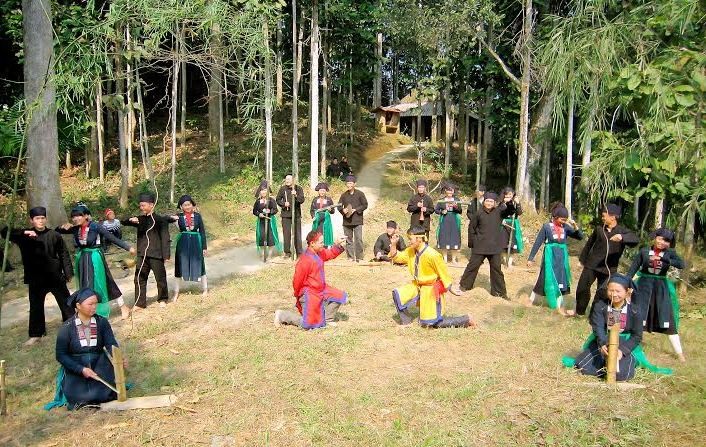
San Chay ethnic people join a Tac Xinh dance. (Photo: phuluong.thainguyen.gov.vn)
Dong Tam Hamlet in Tuc Tranh Commune, Phu Luong District, is nestled amid the mountains and shrouded in mist. Each thatched stilt house is built beside tea plantations, adding to the peaceful beauty of this village on the slopes of the Cam Moc and Dinh mountains.
In the village, the San Chay ethnic community engages in both agricultural production and the vibrant Tac Xing dance - an invaluable cultural heritage and the soul of their spring crop festival.
The Tac Xinh dance is simple, featuring gentle and graceful movements, but it holds deep significance. The dancers hold bamboo sticks in their hands, moving in circles to cheerful music, creating a lively atmosphere.
Alongside drums, gongs, and bells, performers also use bamboo instruments, symbolising a harmonious blend of nature and humanity.
Each step and movement vividly depicts stories about daily life, community bonds, and love.
Two men dressed as shamans hold bronze bells while dancing, with the right foot as the pivot and the other lifting high, their hands ringing bells to the rhythm.
After every step, they turn to face each other and then turn their backs to each other, conveying messages about life's hardships while also expressing the aspiration to live harmoniously with nature to thrive.
The dance begins with movements that reflect preparations for new journeys as people head into the forests or fields. This is followed by movements conveying determination in making decisions and production activities. The performers act like they are sharpening and striking knives, representing survival rituals to protect life.
They then enact agricultural production activities like clearing fields, planting seeds, and caring for rice, illustrating connection between people and their land, and their respect for nature.
The most joyful part of the dance is harvesting, which fully expresses the joy of labour when golden rice grains yield fruitful results as a reward for hard work. During the part, the entire community dances together.
In the final part, the San Chay people bow in gratitude for their gods and ancestors, praying for blessings in future seasons.
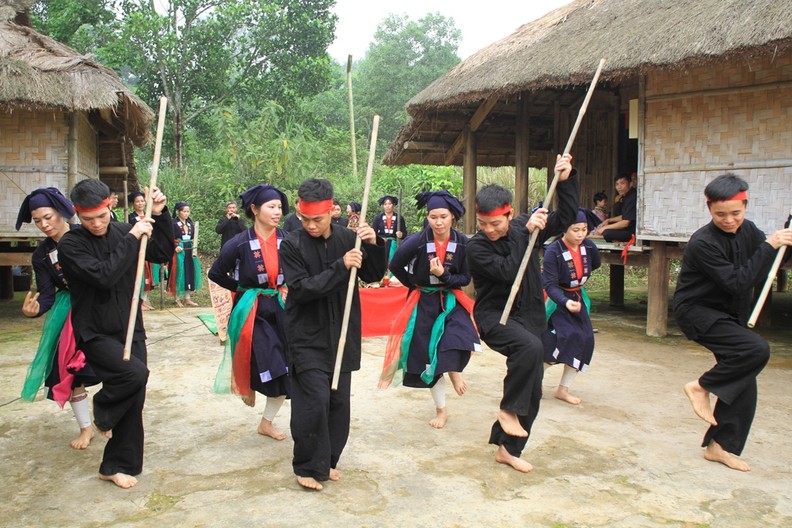
The music of Tac Xing employs simple bamboo instruments that resonate like the heartbeat of Mother Earth.
Elders in the village recount that in the past, the San Chay performed Tac Xing as a ritual to thank the deities after harvest season, conveying their wishes for favourable weather conditions for abundant crops in the new year.
Although simple, every movement evokes deep emotions and philosophies. The music of Tac Xing employs simple bamboo instruments that resonate like the heartbeat of Mother Earth.
This year, with a bountiful harvest at hand, villagers gathered at the cultural house of Dong Tam Village to practice Tac Xinh dance under the instruction of meritorious artisan Hau Thanh Tinh
Although it lasts only about 30 minutes, the restoration the Tac Xing dance to its original form has taken decades of research by local artisans. What is commendable is that the restoration process received enthusiastic participation and appreciation of local San Chay community.
Hau Van Tuan, the youngest son of meritorious artisan Hau Thanh Tinh, who currently lives and works in Thai Nguyen City, returns to his hometown every weekend to learn Tac Xinh dance with the hopes of introducing the dance to his friends.
Since 2014, the Phu Luong District authorities have included Tac Xinh dance in extracurricular programmes at schools to help students better understand this unique cultural value.
According to representatives from Thai Nguyen Provincial Department of Culture, Sports and Tourism, Phu Luong is one of the leading localities in heritage preservation efforts. Eight schools have established Tac Xing dance clubs that attract many enthusiastic students.
In a similar effort, the Vietnam Museum of Ethnology has hosted many events to recreate images and sounds of Tac Xing dance while creating opportunities for the San Chay ethnic community to interact and learn from each other while promoting their culture to both domestic and international visitors.
With every heartbeat of Spring, Tac Xing serves as a reminder of origins and enduring values that cannot fade away. The San Chay ethnic people are not only preserving a dance but also embodying their cultural essence so that future generations can still feel the drums, bells, and sacred steps passed down by their ancestors.
Lu Mai - Translated by NDO


